This is going to be nothing like as long-winded as my review of The Force Awakens – as a (new) rule, I shall now endeavour to keep reviews as brief as possible: even for Star Wars movies.
Rogue One is a tricky film.
Both a tricky film to get right; and a tricky film to react to in clear or certain terms. I’m glad in fact that I delayed posting a review until I’d had a while to process my reaction properly.
Because, had I written a review the day after seeing the movie, it would’ve been a lot more gushing. As it is, within several days of seeing the film, that initial reaction became more tempered and I realised that Rogue One actually wasn’t quite as magnificent as my silly fan-boy mind had been tricked into thinking it was on first-viewing.
The reason – I now understand – that I came away with a false reading at first is because the last 45 minutes or so of the movie are spectacularly good. I mean so spectacularly good.
More than that, the last three minutes or so were virtually cinematic paradise.
That climatic battle sequence blew my mind and put me on a massive high: but the real K.O was the truly bad-ass Vader sequence at the end (which I hadn’t been expecting) and then – most of all – that genuinely wonderful, almost mystical, ending with Princess Leia turning to camera and delivering her line.
All of this, taken together, was overwhelmingly special, hitting all the magic notes, emotionally, nostalgically, and even in just pure awesomeness terms.
I therefore left the cinema in such an uplifted, joyous mood. I left on a high and therefore immediately decided it was a wonderful movie.
But this, as I said, was a slightly false reading.
When someone asked me what I had loved so much about the film, that’s when I realised why it was a false reading. Because I told them, “well, it was seeing Leia/Carrie at the end”, and it was “that bad-ass Vader sequence”.
And soon as I’d given that answer, I realised that these two things I had cited comprised only about three or four minutes of a two-and-a-half hour movie – and both occur right at the end, essentially as an add-on after the ‘main’ body of the film is finished.
And that’s where I think Rogue One falls a little short of what it should’ve been.
I’m not saying, of course, that it’s a bad movie.
I maintain that there has never, to date, been a ‘bad’ Star Wars movie in any era (except for the Holiday Special). Rogue One is a great spectacle, it does some really interesting things, and it works really well in its primary purpose – which is to add a nice, additional piece to the existing Star Wars puzzle.
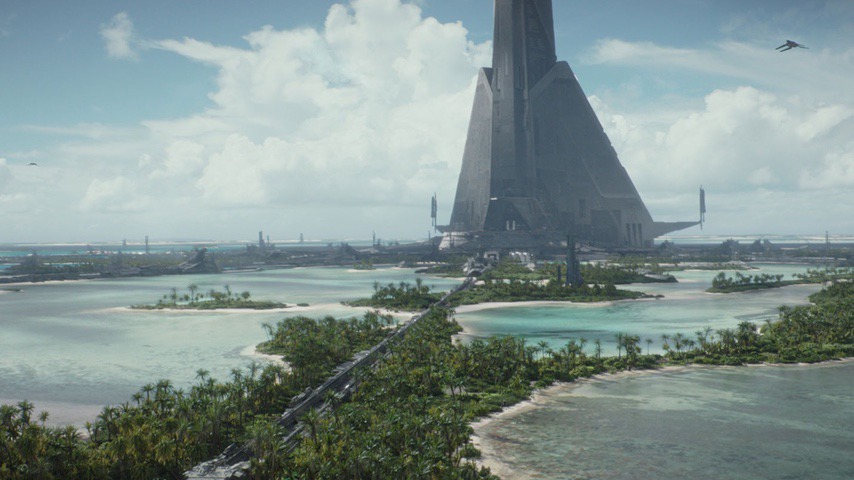
It also works very well as a concept movie.
And, frankly, I would’ve happily paid the price of admission just for that final five minutes – because the Vader sequence is genuinely the happiest I’ve been in a cinema since 2005 and the Leia moment almost brought a tear to my eye.
And, more than that, even without those end moments, I would still have regarded Rogue One as a good, worthwhile Star Wars experiment with enough quality in it to justify itself.
But there is a weakness to Rogue One and it’s this: none of the main characters that we spent the most time with meant much to me. Kassian felt like something of a non-entity. It wasn’t that the actors necessarily did anything wrong (Felicity Jones is actually ok as Jyn Erso) – it just seems that the characters were never really brought to life enough.
The only exceptions were the droid – K2S0 – who was a reasonably fun presence, and the Imperial Big-Bad ‘Krennic’. Ben Mendelsohn makes a suitable imperial career officer and gives a strong performance throughout.
Donnie Yen had a few decent moments as a character who, as an idea, was fairly new and interesting in a Star Wars movie. In fact, thinking about it, I did like the Donnie Yen character a fair bit.
But for the most part, the main rebels, who we were supposed to care about most – particularly when they’re being killed off – became flat notes. And when there’s this many new characters on-screen and yet the only characters I seriously cared about or felt connected with were Leia (six or seven seconds of screen-time) and Vader (a couple of minutes), that’s definitely a weakness in the end product.
This is really the main thing that lets Rogue One down a little. Even Saw Gererra – who, given his pre-existing pedigree in the SW universe, should’ve been particularly interesting – failed to really make much of a mark. In part, this is probably because he wasn’t in much of the story – which seems like a wasted opportunity.
That being said, there is plenty else in this movie that is genuinely superb – even aside from Leia and Vader. And before you think this is a negative review, I should back up a little and redress the balance.
A big part of what IS exciting in this movie is that it’s a first.
It’s not only the first ‘anthology’ movie, but it’s also the first ‘concept movie’ in Star Wars. It is essentially a war movie, done entirely in the style of a war movie (with some of the cliches too), albeit one set in the Star Wars galaxy.
That in itself is, for now, a novelty and a fascinating concept. It was a risky experiment in some ways; and it both works in some places and falls short in others. But, overall – and given how badly it could’ve failed – Rogue One does very well for itself.
John Knoll, visual effects supervisor for the prequel trilogy, had pitched the idea for Rogue One some 10 years before its development: and it’s easy to see why. Who wouldn’t want to go back and visit untold tales from the mythology we know so well? And who wouldn’t want a war film pitting a rag-tag team of rebels against Stormtroopers, AT-ATs and Tie-Fighters ON A BEACH?
What really does win in Rogue One is its nature as a concept film: not just at the primary level of the premise. But in lots of specific additional ways too. There are lots of great concepts played out here – from the battle on the beach to the eerie restoration of Peter Cushing to on-screen life. There are also stunning visual moments and shot-composition, much of it during the Scarif battle, a lot of it also involving Death Star visuals.
This is, visually, a great, great Star Wars film.
In fact, coming back to my criticisms about the main characters, I actually do consider that the characters simply weren’t important in this film. It could be argued that Rogue One was much more about the concept (the ‘war movie’, the anthology movie, and the fan-film to tell the story of the Death Star) than about the characters.
Certainly more effort seems to have gone into the conceptual side of the film than into the characters. Maybe that’s fine.
And perhaps Rogue One should be viewed as a film about the Death Star and about the Star Wars galaxy in general and not about the minor characters taking up most of the screen time. They are, in effect, throw-away characters anyway, who aren’t meant to survive the story.
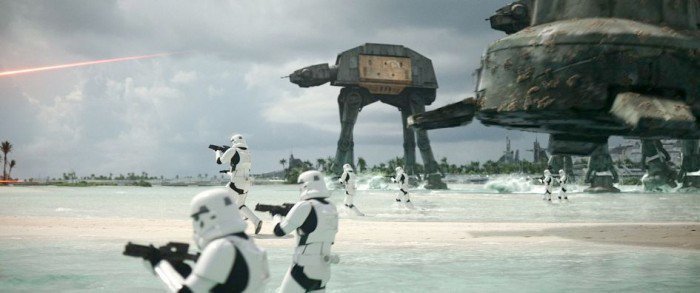
All of the use of archival footage and inter-splicing is very clever and highly effective, imparting to the already-spectacular battle sequences an extra layer of canonical continuity. That multi-faceted battle sequence on Scarif really is superb, even by Star Wars standards: which is saying something, as Star Wars has already set such unmatched standards in previous films when it comes to effects and big-scale sequences and you wouldn’t think there was anything that could particularly be done now – in 2016 – that hasn’t already been done.
But this sequence really does raise the bar even higher and is possibly the finest big battle sequence since *at least* the Geonosis/Clone Wars battle in Attack of the Clones. It’s probably better than that Episode II sequence; but I need to wait until the Blu-Ray/DVD release and then do a cross-comparison.
Certainly, it’s one of the two or three greatest battle sequences in the entire canon. It just works so beautifully on so many levels, with all of the intricate inter-play between different, multi-faceted elements of the operation – there’s a battle in space and in the atmosphere, and there’s the operation on the surface, and it all criss-crosses superbly. The Dubai-beach-style backdrop on Scarif is also stunningly gorgeous and imparts yet another layer to the action, making everything not just exciting and engaging but also genuinely pretty.
This sequence alone – which goes on for a very long time – really would be worth the price of admission on its own.
And all of the little fan-boy details and easter eggs mean that Star Wars universe die-hards can also get even more out of it than the average cinema-goer (there’s so many of them scattered throughout this film, but great examples are the Hammerhead Corvettes from the ‘Princess on Lothal’ Rebels episode and the ‘Red Five’ reference designed to play into Luke’s role in the A New Hope Death Star battle – I also did dig the Ponda Baba cameo early on).
Having both Jimmy Smits and Genevieve O’Reilly was a massive plus for me, particularly as I’d been concerned for some time now that the Disney acquisition of Star Wars was unjustly geared towards erasing the prequel era entirely from Star Wars lore. But having Smits and O’Reilly here really fixes that nicely. Smits only has a small cameo, but it’s just enough to create that sense of connection with the prequels, and likewise with O’Reilly (even though her Mon Mothma scenes were cut from the final edit of Revenge of the Sith).
Mon Mothma’s presence helps to connect Rogue One nicely with both ROTS and Return of the Jedi, while Bail Organa’s specific line about Obi-Wan (though he doesn’t mention Kenobi by name) really serves to point us directly into A New Hope – just as the whole film does.
I also thought that in terms of the locations and settings, this felt a lot more like a Star Wars film than TFA did. The various planets and environments all felt engaging and lucid, particularly Scarif at the end, which was visually stunning (the colours/tones in this setting really imparted a great aesthetic to the climatic battle sequences).
But some of the other locations, though less immediately-striking, provided suitably vivid backdrops. The Wadi Rum in Jordan was used to represent Jedha, which gave it a real Lawrence of Arabia feel in places. And in general, this felt more like the bigger, richer SW universe again – something that was lacking in TFA, which, by comparison, felt very small and limited.
A number of these scenes – particularly early on – also do very well on atmosphere and really creating a lucid sense of life in the Star Wars galaxy at this point in the timeline.
Which brings me to something else I very much loved in this film – having Vader’s castle be located on Mustafar is just so perfect, such a good move. It just imparts even more to Vader’s tortured, twisted psychology to know that he set up his residence amid the lava fields in the place where Anakin was slaughtered and Vader’s life as a mechanical man began.
The moment I noticed the streaks of lava, a big, dirty smile appeared on my stupid face as I thought “yep, that is perfect”.
Vader in general, though he only appears in two scenes, feels like such a presence in Rogue One. His early scene with Krennic isn’t particularly good (his line about “choking on your ambitions” was a bit much for Vader), though it does give us that first on-screen look at the Vader castle (originally conceived for Empire Strikes Back). And, of course, it’s special hearing James Earl Jones’s Vader tones again.
The later scene, however, in which Vader boards the rebel ship and slaughters a load of rebel troops is just unbelievable.
Partly because I didn’t know it was coming and partly because it’s just so damn awesome, this sequence just blows me away. Firstly, the last thing I expected in Rogue One was a scene that would qualify as even one of the greatest Vader moments ever, let alone a contender for *the* greatest Vader moment ever.
It’s still too new and early to make that claim for it – but it’s right up there, for sure. I was talking to someone a few days later and he summed up pretty well by saying this was the only time in any Star Wars film that he has been genuinely afraid of Darth Vader.
We’ve never seen Vader this bad-ass before.
We’ve seen Anakin this bad-ass; but not in the Vader suit. This is the Darth Vader sequence we’ve always wanted to see – though, until I saw it, I didn’t realise just how much I’d been wanting something like this all of these years. For some, it was a scene that was sorely missing from Revenge of the Sith (albeit for good reasons).
Some might complain that it causes problems with subsequent Vader scenes in the OT (particularly the slug-slow duel with Obi-Wan in A New Hope) – and that’s a fair point.
But when a scene is this damn good, it’s hard to complain.
Funnily enough, this is also a sort of ruthless slaughter scene that I always felt should’ve been shown better in Episode II – specifically, when Anakin slaughters the Tusken Raiders in the village. In Episode II, we only saw a couple of quick shots of it and then the rest was just implied; I’d always thought we should’ve actually seen that slaughter more vividly.
Here, however, this really is the fan-boy’s wet-dream, with Vader unleashed in all his dark, bad-ass power. THIS IS VADER as we always imagined Vader should be! And I’m so glad that they chose to put this in there; particularly as this scene – and the accompanying Leia scene that follows it – probably weren’t essential to the basic body of the film and probably didn’t *need* to be there.
I don’t know whether the Leia and Vader ending was always an intended part of the film or whether it was added on relatively late in the storyboarding as a way just to pay fan service or make the connection to the primary saga all the more lucid.

But, whatever the case was, I give thanks – because this three or four minutes of cinema has made my year.
The Leia moment, as I said earlier, brought a tear to my eye and evoked much more of a reaction from me than I thought anything in this film would. I mean, we’re, at this point, already reeling from the Vader bad-assery, and then we go right into the familiar interior of the Tantive IV… at which point I’m thinking “No, surely we’re not going to see Leia…”
Then we see the familiar figure, robed all in white, with her back to us. We know that’s Leia. But even now I was thinking, “oh, that’s so cool – we’re going to end on this subtle, sweet moment of Leia with her back to us” – which on its own would’ve been superb anyway.
But, no, she turns around, lowers the iconic hood, shows her face and speaks the final line of the film.
THAT is cinema magic. That is the magic of Star Wars.
Now, I know some people have qualms with this whole side of things.
Which brings us to the issue of ‘resurrecting’ actors from the past with digital trickery and whether it’s a good thing. There are also some criticisms around whether this composite of ‘Leia’ is actually convincing.
On the latter question – no, it probably isn’t quite convincing enough. However, for what it is, it’s fine – she’s only on screen for a few seconds. Had it been multiple scenes or longer sequences, it would’ve been a problem, but this is fine.
And it is, again, such a beautiful moment of nostalgia overload and serves to tie Rogue One into A New Hope so superbly that I find it hard to criticise it.
On the former, I would probably have a problem with an industry developing whereby deceased actors or younger versions of living actors are used in films. But used strategically and sparingly, as it is in Rogue One, I have no issue with it at all. It’s all about extent and context. Applied judiciously and for very strong reasons, it is simply another new tool for filmmakers. You couldn’t DO this story without Grand Moff Tarkin – and if you were going to have Tarkin, then it made perfect sense to try to recreate the likeness of Peter Cushing as much as possible.
Arguably the Leia scene was less necessary; but it was so powerful and so rich, that it justifies itself fully (the fact that Carrie died just a week or so after the film was released imparted even more poignancy to this ending – a point I alluded to much more expansively elsewhere: read ‘Are We Living in a Dream Reality?‘).
Lucasfilm has always been about the cutting-edge of filmmaking techniques and technologies – both in the breakthrough effects techniques of the Original Trilogy and in the cutting-edge digital innovations of the prequel trilogy – and it is therefore fitting (and exciting) to see that continuing into these new , post-Lucas enterprises.
I was astonished by how convincing ‘Tarkin’ was for the most part – much more convincing, in terms of detail, than Leia was.
What this also opens up, of course, is a staggering level of possibility for future Star Wars movies – the fact that it may be possible to create convincing digital versions of established SW characters that we might not otherwise be able to see again.
I could probably go on for another twenty paragraphs, analysing my early impressions of this movie – but I swore I would limit the length of these Star Wars pieces, so I’ll bring this to a close for now.
As a fan-boy, there were a couple things I would’ve liked to see in this story that we didn’t.
An appearance by the Emperor would’ve been great, even via hologram. And I really feel that – in a story all about the Death Star’s construction and emergence – we really should’ve had some reference to the Geonosians. It wouldn’t have had to even be an appearance by any Geonosians, but just a reference to the origins of the Death Star design (and perhaps even to Count Dooku having been the one to bring the designs to Palpatine). Given the willingness to bring Jimmy Smits on-board, there clearly wasn’t the same Kennedy/Abrams-like dismissal of prequel canon; so some mention of the Death Star’s origins would’ve made for really good continuity.
But I’m nit-picking here: and, given the Leia ending, the Vader bad-assness and a dozen other things, I can hardly complain that there wasn’t enough fan service.
So, Rogue One in summary – superb in places, lackluster in other places, a little dry in the middle.
But, overall, a very bold venture that scores more hits than misses and, if anything, would deserve great credit just for attempting to do what it did.
It’s a genuinely a great slice of Star Wars that fits in tidily with the existing canon – and actually adds a fair bit more to it. What it proves to me (and I actually did need it proved to me) is that there is a lot of potential and value still be had in mining the Star Wars galaxy for films.
I was actually non-plussed back when the Disney acquisition of Star Wars announced and the new trilogy was being talked about. But when the anthology films were announced, one of the first things I thought was that I would be much happier with a succession of standalone films set in the Star Wars galaxy than with an actual trilogy continuation of the main saga.
The reason being that a trilogy/saga continuation presented the danger of ruining or undermining the victories and the thematic closure of Return of the Jedi; whereas standalone films wouldn’t do that and would, in fact, have the potential to simply compliment or enhance the existing six-film Lucas saga.
As much as I enjoyed The Force Awakens, it did also depress me for those precise reasons: and it wasn’t just Han’s death, but it was having Luke be a failure, having Leia and Han be estranged, having the New Republic be a failure, and in short having the whole cycle of Dark Side seduction, betrayal and estrangement simply repeat itself all over again – despite everything that Luke, Leia and co had done to redeem their family and topple Palpatine’s corrupt order.
Rogue One, on the other hand, does precisely what I thought an ‘anthology’ movie would do – it tells a story within the Star Wars framework, but doesn’t undermine anything in the previous films. In fact, it enhances the previous films – both the prequels and, most of all, A New Hope.
And it really does breathe even more life into A New Hope.
It isn’t just on account of the Leia ending. When I came out of the cinema, I was aching to go home and watch A New Hope – and the transition works perfectly. I now can’t watch A New Hope without thinking about Rogue One. It does what it should do – slots in nicely to the existing saga, tells a story that sheds new light on an aspect of the mythology, and breathes some fresh life into the existing films.
Ironically, I still think The Force Awakens is – overall – a better film: but, perversely, I think Rogue One *does* more for the overall Star Wars canon, whereas TFA actually take a little bit away from pre-existing Star Wars.
It will be interesting to see how this dichotomy plays out in the coming years in regard to both the ‘main’ saga and the anthology films. For now, Rogue One – though not perfect – is a thoroughly enjoyable and worthwhile addition to the already-rich mosaic of Star Wars.

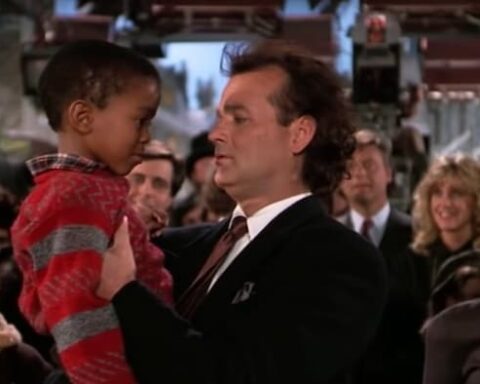
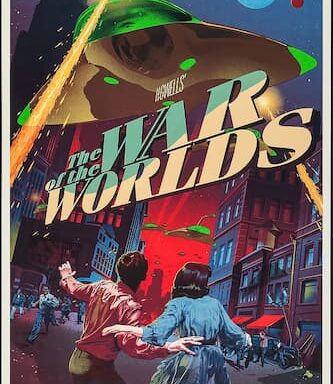
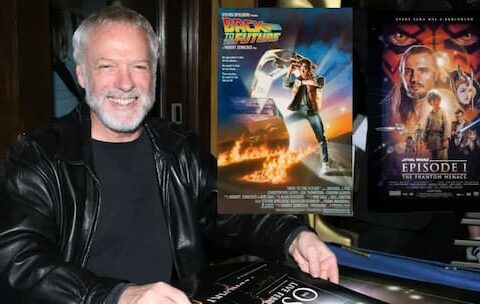
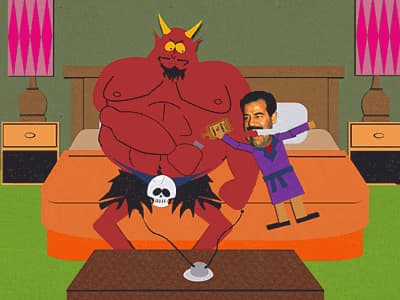
I disagree with you about not being emotional invested with some of the new characters. In a two hour film that moves at the pace that it does, it’s arguably difficult to spend too much time exploring these new characters. but I am pleased you enjoyed it. It will continue to grow on you in time.
Thanks man. And thanks for coming by and taking time to read and comment – I appreciate it.